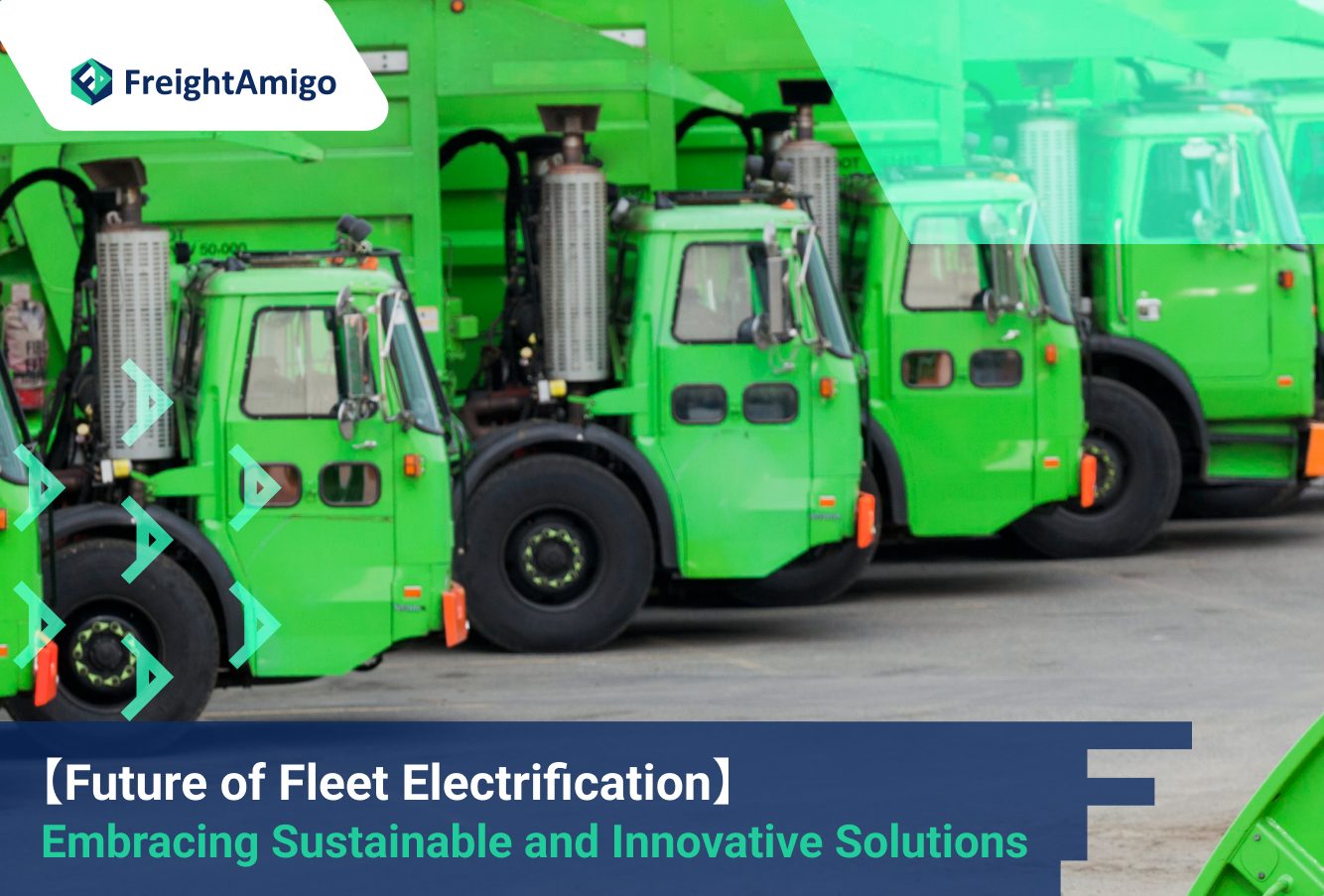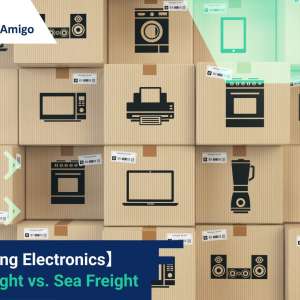January 12th, 2024: Maya Wong – Marketing Analyst at FreightAmigo
In today’s rapidly evolving world, embracing sustainable and innovative solutions is crucial for businesses to stay ahead of the curve. One such solution that has gained immense popularity in recent years is fleet electrification. As the world shifts towards a greener and more sustainable future, fleet managers are recognizing the numerous benefits of transitioning their fleets to electric vehicles (EVs). In this article, we will explore the trends and advancements in fleet electrification, and how it is revolutionizing the transportation industry.
Want To Compare The Best Express, Air Freight, Sea Freight, Rail Freight & Trucking Rates So As To Have Better Control On Cost?
The Rise of Fleet Electrification
The transition to fleet electrification is gaining momentum globally, driven by factors such as environmental concerns, government regulations, and advancements in EV technology. According to a report by the State of Sustainable Fleets, leading companies like IKEA, Walmart, and Nike are actively working with their carrier partners to reduce supply chain greenhouse gas emissions in response to consumer demand and regulatory pressures. These companies, along with others, have set ambitious goals to reduce carbon dioxide and greenhouse gas emissions by 80-100% by 2050.
Electrifying the Fleet Electrification: Benefits and Opportunities
The decision to electrify a fleet brings numerous benefits and opportunities for organizations. One of the primary advantages is the ability to meet sustainability objectives, including a significant reduction in CO2 emissions. By switching from traditional internal combustion engine (ICE) vehicles to EVs, fleet managers can contribute to a cleaner and greener environment. Additionally, electrification reduces fuel consumption, resulting in substantial cost savings for organizations. With the availability of government rebates and incentives, the financial burden of transitioning to electric fleets is further alleviated.
Advancements in EV Technology
As the demand for EVs grows, so does the need for advancements in EV technology. Fortunately, the industry has witnessed significant progress in recent years. The cost of EV batteries has been decreasing steadily, making EVs more affordable and accessible for fleet managers. Furthermore, battery range has increased, allowing for longer trips and reducing concerns about range anxiety. Charging infrastructure has also seen significant improvements, with plans for a substantial ramp-up in 2023. This expansion in charging networks will make fleet electrification even more feasible and convenient for organizations.
Managing a Mixed Fleet: Integrating ICE and EV Vehicles
While the transition to a fully electric fleet is the ultimate goal for many organizations, it is essential to acknowledge that the process will take time. In the coming years, fleets will likely consist of both ICE-powered vehicles and EVs. Fleet managers need to adopt a comprehensive telematics solution that can effectively monitor and manage both types of vehicles. This integration allows for seamless fleet operations and ensures the efficient utilization of resources. Despite the high cost of EVs, batteries, and charging infrastructure, the demand for battery electric vehicles (BEVs) continues to exceed supply, emphasizing the need for effective management of a mixed fleet.
Optimizing Vehicle and Asset Service Lifecycles
In recent years, automotive supply chain obstacles, such as the pandemic and geopolitical conflicts, have led to delays in new vehicle and equipment deliveries. While industry analysts are optimistic about improved delivery times, it will take some time to reach pre-pandemic levels. In the meantime, fleet managers can optimize their current vehicles and assets to maximize productivity. By integrating maintenance scheduling with telematics data, fleet managers can gain insights into vehicle utilization, fuel consumption, and driving behavior. This information enables informed decision-making and ensures that vehicles are operating at their optimal level.
The Rise of Shared Vehicles and Mobile Vehicle Management
Fleet managers are constantly seeking ways to optimize their assets and enhance operational efficiency. Analysts predict an increase in the use of mobile devices for various fleet management tasks, such as payment at fueling and charging stations, vehicle health monitoring, and commercial vehicle regulatory inspections. Digital transformation plays a crucial role in enabling fleet managers to track driver vehicle inspections digitally, eliminating the need for paper-based processes that are prone to errors and loss. Additionally, mobile devices can be used to track driver behaviors and increase productivity, enhancing overall fleet management capabilities.
Enhancing Security: Recovering Stolen Vehicles and Cargo
The issue of vehicle theft continues to plague the transportation industry, with nearly 750,000 vehicles stolen by the end of September, the highest number since 2008. When fleet vehicles are stolen, not only is the vehicle itself lost, but the cargo becomes the primary target. To combat this, fleet managers can implement video dashcams, especially dual-facing ones, to provide evidence of theft to insurance companies and aid law enforcement in identifying vehicle thieves. Additionally, GPS management and vehicle tracking devices can assist authorities in locating stolen vehicles and recovering them when they are parked or abandoned. Educating drivers on how to react to potential theft situations and training dispatchers to respond effectively to deviations from assigned routes are essential measures to enhance security within a fleet.
The Future of Fleet Electrification: Driving Efficiency and Cost Savings
As businesses navigate economic uncertainties, fleet managers are continuously seeking opportunities to drive greater efficiency, increase fleet safety, and reduce operating costs. Fleet electrification, with its potential for cost savings and reduced environmental impact, is a significant trend that will continue to shape the future of fleet management. By embracing sustainable and innovative solutions, businesses can position themselves as leaders in their industries and contribute to a greener and more sustainable future.
Conclusion
Fleet electrification is no longer a distant vision but a tangible reality that offers numerous benefits and opportunities for organizations. As the world shifts towards a more sustainable future, fleet managers have a crucial role to play in driving the adoption of electric vehicles and reducing carbon emissions. By embracing the advancements in EV technology, optimizing vehicle service lifecycles, adopting mobile vehicle management solutions, and enhancing security measures, fleet managers can navigate the challenges and seize the opportunities presented by fleet electrification. The future of fleet management is bright, with increased efficiency, cost savings, and a positive impact on the environment. Let us embrace this transformation and work towards a greener and more sustainable future.
There Are Different Options For Cargo Transportation. If You Want To Choose The Most Convenient And Suitable Solution, It Is Best To Have The Full Support Of Logistics Experts! If You Are Planning To Ship Goods Overseas, Please Go To The FreightAmigo Page For Inquiries.
===
Read More:
【How to Ship Car Batteries】 A Comprehensive Guide
【Packaging EV Cars for Transportation】 Ensuring Safety and Compliance
===
If you have any inquiries on logistics/supply chain, feel free to contact FreightAmigo now:
Chat with us online OR
Phone : +852 28121686
WhatsApp: +852 27467829









































